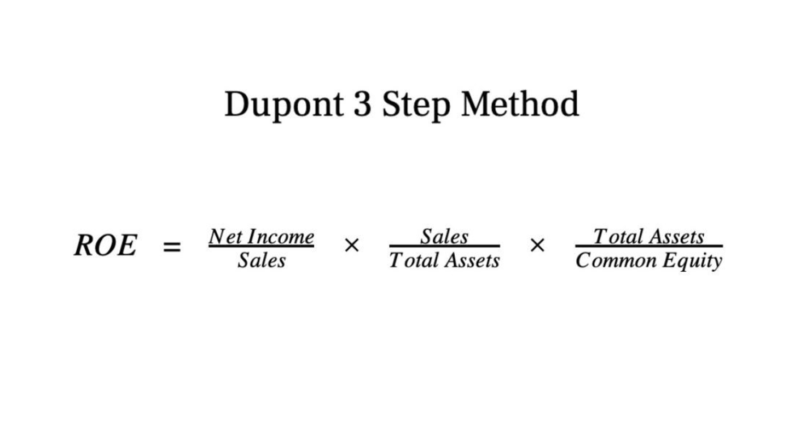INCREMENTAL COST: Definition, Formula, Examples & Calculations

Thus, the final regulations clarify that these precursor or other intermediate materials are relevant for both the Critical Minerals Requirement and the FEOC Restriction. The term “sale” is relevant to the determination of whether there is a qualified sale for purposes of section 25E(c)(2) and the applicable recapture provisions under sections 25E and 30D. The commenter’s proposed definition is overly broad and would not require that the transfer of ownership be made for consideration provided by the buyer. Further, section 25E(a) provides that the section 25E credit is only allowed for a qualified sale of a previously-owned clean vehicle.
- In the case of a vehicle return within 30 days of placing a clean vehicle in service in which the taxpayer made a credit transfer election, the eligible entity must repay the amount of the credit as an excessive payment.
- Similarly, the credit transfer election framework incentivizes the purchase of previously-owned clean vehicles and new clean vehicles from dealers.
- A commenter suggested the Treasury Department and the IRS provide the option to use widely-recognized and trusted market indices to serve as an acceptable estimation of the price of a particular step in the procurement chain for which actual prices for certain procurement chains or portions of the procurement chain cannot be determined by the manufacturer.
- Under paragraph (d)(2)(ii) of this section, M attests to the 500 FEOC-compliant batteries and provides the basis for the determination, including attestations, certifications, and documentation demonstrating compliance with paragraphs (b) and (c) of this section.
- Another commenter expressed concern that the proposed first transfer rule is more restrictive than the statutory language and could severely limit the applicability of the section 25E credit.
III. Section 45W
The proposed regulations did not specifically address the requirements under section 30D(g)(2)(B)(ii) and (D) relating to the disclosure by the dealer of other incentives. A commenter suggested the proposed definition of “sale price” be amended to include the total transaction amount, less any government-imposed taxes or fees, and including all add-ons and any non-government fees to prevent dealers from capturing a large portion of the credit as profit. The proposed definition already effectively does what the commenter suggests by excluding only separately-stated taxes and fees as required by law. The final regulations thus adopt the proposed first transfer rule without substantive change.
VIII. Notices of Proposed Rulemaking
- In addition, the Treasury Department and the IRS determined it was reasonable to assume an intent to resell the vehicle, making the purchase of the vehicle ineligible, if the vehicle was resold within 30 days.
- Proposed §§ 1.25E-3 and 1.30D-5 provided transfer rules under section 30D(g) (and section 25E(f) by cross reference to section 30D(g)), including the establishment of an advance payment program for such transfers.
- Because the IRS may have access to some information necessary to determine whether a first transfer was to a qualified buyer, the Treasury Department and the IRS considered alternatives to the first transfer rule such as a look-up tool regarding prior claims of the section 25E credit for a particular vehicle or information regarding prior vehicle purchasers.
- Due to economies of scale, it might cost less in producing two items than what was incurred in producing each one separately.
Therefore, it is unnecessary to modify the definition of “extraction” in the manner the commenter suggests. However, the final regulations clarify that extraction also includes crude oil extraction to the extent processes applied to that crude oil yield an applicable critical mineral as a byproduct. The final regulations also clarify that extraction does not include activities that begin with a recyclable commodity (as such activities themselves constitute recycling). Under the proposed definition, extraction concludes when activities are performed to convert raw mined or harvested products or raw well effluent to substances that can be readily transported or stored for direct use in applicable critical mineral processing. Extraction includes the beneficiation or other physical processes that allow the extracted materials, including ores, clays, and brines, to become transportable.
PERIOD COSTS: Types and Examples
The proposed regulations allowed qualified manufacturers to average qualifying critical mineral content over a limited period of time (for example, a year, quarter, or month) with respect to vehicles from the same model line, plant, class, or some combination of thereof. Several commenters were supportive of the proposed https://www.bookstime.com/ rule or sought a broader averaging rule. One commenter asked that the final regulations expressly allow for an 18-month averaging period. One commenter requested that the final regulations consider also allowing qualified manufacturers to average critical mineral content over batteries produced at a particular facility.

One commenter asked for clarification as to whether foils, such as a copper foil that does not contain any applicable critical minerals, are constituent materials. Noting that PVDF made from fluorine (in the form of an applicable critical mineral) would be a constituent material, the commenter asked for clarification about the classification of PVDF that is not made from an applicable critical mineral, such as PVDF sourced from phosphate rock. The final regulations clarify that battery materials may not contain applicable critical minerals. Further, the Treasury Department and the IRS note that the materials referenced by these commenters (foils and PVDF) would both be considered battery materials without applicable critical minerals. (F) Under paragraph (d)(1) of this section, a compliant-battery ledger must be established for calendar year 2025. For purposes of paragraph (d)(2)(i) of this section, M determines that it will manufacture 500 batteries for calendar year 2025 that are FEOC-compliant, allocating its FEOC-compliant applicable critical minerals to the cells containing FEOC-compliant battery components.
Increased revenue
It is usually calculated when the company produces enough output to cover fixed costs, and production is past the breakeven point where all costs going forward are variable. However, incremental cost refers to the additional cost related to the decision to increase output. For example, the production cost of a standard 100 units for a business is known but by adding a further 10 units, there is a need to calculate the incremental cost to show the change in the total cost of the additional units.
While both Incremental Cost and Marginal Cost look at changes in costs due to alterations in production, there’s a difference in scale. Incremental Cost refers to the cost change with any amount of product increase, whereas Marginal Cost definition incremental cost specifically refers to cost changes from producing one additional unit. Incremental Cost is crucial in decision-making processes because it provides companies with detailed information on the cost implications of expanding production.

Unapplied Credit: What Does It Mean?


0 Comments